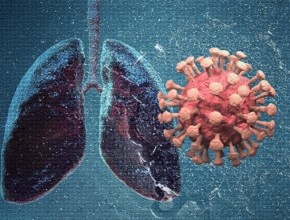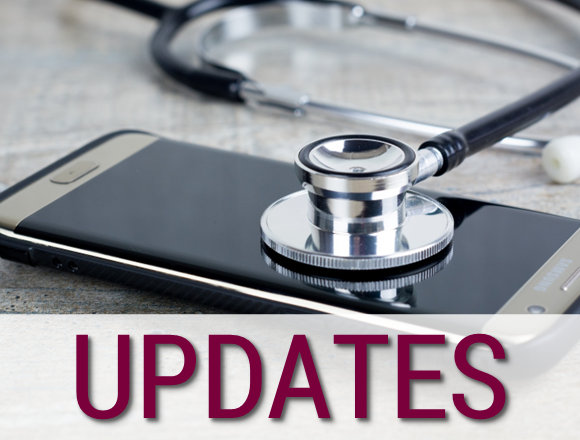Two McMaster Textbook editors—Dr Roman Jaeschke, an intensivist, and Dr James Douketis, an expert in thrombosis—discuss the paradigm-changing results of the latest clinical trials on therapeutic anticoagulation in both critically and noncritically ill patients with coronavirus disease 2019 (COVID-19).
Roman Jaeschke, MD, MSc: Good morning. Welcome to another edition of McMaster Perspective. It’s a little bit unusual, because you have 2 editors of this section of the textbook talking to each other, but we’ll carry different hats. Professor Douketis is a world-renowned expert in thrombosis and, at the same time, a clinician who was looking after numerous coronavirus disease 2019 (COVID-19) patients on the medical floors, [let’s] call it noncritically ill or not intensive care unit (ICU)–requiring patients. And I’m also interested in thrombosis and I work in the ICU. I was involved in the care of numerous ICU-type patients with COVID-19. [There have been] 2 recent publications that provide us with new information about antithrombotic therapy (doi: 10.1056/NEJMoa2103417, doi: 10.1056/NEJMoa2105911). Maybe I will ask Professor Douketis to put it into the context of thrombosis and COVID-19. Jim?
James Douketis, MD: Thank you very much, Roman, and hello everyone. I think I wanna just start by providing a bit of a background as to how this type of study came about because it’s very unusual and very paradigm changing.
The first thing is we need to step back a year ago and think about what happened during the beginning of the pandemic. And one of the initial observations was that a high proportion of hospitalized patients with COVID-19 were developing thrombosis, typically venous thrombosis. And this was occurring despite the use of standard thromboprophylaxis with heparin, or low-molecular-weight heparin (LMWH), leading many investigators to suspect that COVID-19 was a hypercoagulable disease, and some even called it “the perfect thrombotic storm,” very dramatic. This led investigators to hypothesize that “Well, if prophylactic or low-dose anticoagulation is not good at suppressing the development of thrombosis, should we increase the intensity and go to a therapeutic or full-dose anticoagulation regimen?”
This is quite striking and paradigm shifting. Why? Because this is the first time ever when we’ve used high-intensity or therapeutic full-dose anticoagulation in patients who have not been demonstrated as having confirmed thrombosis. Of course, this is gonna cause uncertainty and caution among clinicians like myself and Dr Jaeschke, and many, many others, because anticoagulants, as we all know, come with a risk of serious bleeding and this risk may be accentuated in hospitalized patients, particularly those in the critical care setting. So, the premise also of this approach was that heparin would not only prevent a thrombus from forming in situ in the lungs where COVID-19 was active but would also modify or mediate the inflammatory process. So, it was a 2-pronged approach to deal with this new concept of thromboinflammation, where the 2 are linked. Heparin would work as an anticoagulant and, in a manner of speaking, as an anti-inflammatory agent, because we know, of course, [that] biologically heparin has anti-inflammatory properties.
With that background, now we have the results of this trial, which showed that in some patients heparin has a therapeutic benefit, and [in] other patients, it doesn’t. In those patients who are in a critically ill environment, typically an ICU, there is no net therapeutic benefit, whereas in patients who are on a medical ward—not in a critical care unit but probably receiving supplemental oxygen and other treatments for COVID-19—there is a therapeutic benefit. This answers some questions but raises other questions in terms of how we operationalize it, how we apply this to our everyday practice.
I think the next stage is to say “OK, how do we take these results?” And, putting ourselves in a clinician’s shoes, the first question is “Well, which patients should be eligible for therapeutic anticoagulation? What is the patient phenotype in which the results of this trial may be applicable and may provide a therapeutic benefit?”
In the way that I see it as a clinician, again, working on a COVID-19 unit, these are patients who are ill enough to be in the hospital, they’re on supplemental oxygen, they may even be on high-flow nasal cannula depending on the setting and what the hospital allows in that setting, they’re typically receiving corticosteroids—dexamethasone—they may be receiving other treatments, either remdesivir or tocilizumab. And they are ill, so their disease is progressing over time. This is a type of patients [in whom], yes, I would freely use a therapeutic or full-dose anticoagulant regimen and I would typically go with LMWH because this is far easier to use than intravenous unfractionated heparin and, in fact, this is what most of the patients in the trial used. This would be administered for the duration of that patient’s hospitalization in an effort to reduce the need for intubation or escalation of support through oxygen and other means. Then the question arises: “OK, what happens if that patient deteriorates? What happens if that patient gets better and goes home? Do we continue anticoagulation? Do we stop anticoagulation?”
Let’s look at the first situation. That is a patient deteriorating despite these treatments. Then we go from a non-ICU to an on-ICU setting. And if we looked at the patients who were studied in the trial, who were initially in an ICU setting, we found that the benefits of therapeutic anticoagulation were not there and, in fact, there were numerically more bleeds. So, you know, maybe we should not be using those agents when we transition patients from a non-ICU to an ICU setting, but the trial did not exactly address that question. That’s a separate question, which is “If my patient on the ward deteriorates and now needs to go to the ICU, should they continue with anticoagulation?” And I think, in the absence of clinical trial evidence, we need to use our clinical judgment and look at it on a case-by-case basis. What I do, for what it’s worth, is that if that patient is not at high risk for bleeding or is not demonstrating any bleeding, they can continue, but this is a cautious continuation of therapeutic anticoagulation, recognizing that the benefit is attenuated or not there, based on the clinical trial evidence.
The second scenario is that a patient is on the ward, receives the treatment, and now is ready to go home. Of course, we’re not gonna be continuing a lot of the other treatments that they’re receiving and I don’t see the point in continuing therapeutic anticoagulation. We know from emerging data that in patients who have COVID-19 and are hospitalized, and then go home, the risk of de novo thrombosis is very low—it’s in the 1% range. So, I can’t really justify continuing therapeutic anticoagulation after they’re discharged. Whether we continue a low-dose anticoagulant regimen is a separate question. The general answer is no unless they have multiple other risk factors, for example, if they’ve had previous thrombosis or if they’re clearly not mobilizing very well—then you might justify continuing anticoagulation but with a low-dose regimen. So, those are a few of the questions that I think we need to discuss, that aren’t actually addressed by the trial.
Roman Jaeschke: Jim, thank you very much for sharing with us the most useful answers, that is, what you do in situations where we are not sure, [in patients who] were transferred from the floor to an ICU—or, putting it differently, [when] a patient continues to deteriorate—or from the floor, where they are anticoagulated, home, which means they are improving. Let’s talk for a second longer about the way we operationalize the definition of less sick or moderately sick people and severely ill [people] because different places may define them differently.
We usually see a patient with COVID-19 who does not need any support and then they need oxygen, and then we start to escalate it to a high level of oxygen through a regular mask, and then we give them high-flow nasal cannula oxygen. And then, or alternatively, we give them noninvasive ventilation in the form of BiPap. And then we intubate and they go on mechanical ventilation. And then they get sicker and they go on extracorporeal membrane oxygenation (ECMO). In the trials, they operationalize the severely ill not necessarily as ICU patients but [as] patients requiring the ICU type of support. So, they could have people on the regular floor, if you wish, who were on high-flow oxygen nasal cannula and they already called them severely ill or critically ill. Or they could have people in the ICU—geographically, physically in the ICU—but they were on a regular oxygen mask and they [the investigators] called them moderately sick. So, the distinction was not geographic, ICU versus non-ICU, but how sick they were.
We obviously think on the basis—if I understand you correctly and if I understand the papers—that we know [that] —and we will probably increase [the use of] this intervention—we should anticoagulate people when they are in the hospital, on oxygen but before ICU-type interventions. We also probably understand that people who are on mechanical ventilation do not benefit in balance from anticoagulation. The question for me is the threshold in which we start using those other interventions—high-flow nasal cannula and noninvasive ventilation—for which we have different rules, regulations, allowances in the hospital, accessibility, and so forth. It strikes me as difficult to justify, but if I have a patient in front of me on the regular ward, if I don’t start high-flow cannula [oxygen support], I will anticoagulate that person, and if I decide to start it, I should not [anticoagulate that patient]. It makes no clinical sense. It probably calls for the use of the old-fashioned judgment, [for] whatever it is worth. Would you agree?
James Douketis: I would completely agree, Roman. There are no clear demarcation points or clear objective criteria to distinguish between what the trial called “moderately [ill]” and what the trial called “severely ill.” And I think that a large measure of clinical judgment has to be used in that regard. I think that, from my perspective, biologically, what we wanna do is administer the treatment during what I like to call “a therapeutic sweet spot” where, you know, the degree of in situ thrombosis mixed in with inflammation has not gone beyond a certain point [at which] we may be incurring an increased risk for bleeding with therapeutic anticoagulation. And that is a complete clinical judgment call.
I think we do that with some of the other treatments for COVID-19 as well. But if you were to ask me, well, what is… I mean, there’s a clear phenotype “that’s a moderately ill person” and there’s a clear phenotype “that’s a severely ill person,” and there are gonna be those patients in the middle, where we must rely on clinical judgment. But I think the issue is [that] if we look at that spectrum, we have to invoke some clinical judgment. But at the same time, we have to recognize that the trial showed us that heparin used therapeutically is still pretty safe. So, if you [don’t] want to err on the side of giving some more heparin because, you know, maybe that person you think is in that moderately severe group, I think the trial results give us confidence that we can administer this regimen in a relatively safe way.
Roman Jaeschke: Jim, maybe the last question. Looking after ICU patients with COVID-19, I was overwhelmed by the frequency with which we had to use anticoagulation because they were developing thrombotic complications. I remember when I came to the unit, we had, I don’t know, 15 patients with COVID-19, all of whom were on anticoagulation for good indications. It’s difficult for me to understand why we have to use the treatment in almost everybody, if it kind of does not provide benefit if used prophylactically. Any words of wisdom?
James Douketis: The patient population in an ICU setting, with various lines and devices that are all thrombogenic to some degree, is a different situation than when we compare the pathogenesis of thrombosis from the COVID-19 perspective, which, as you know, is not an embolic kind of phenomenon. It’s an in situ type of thrombosis. It’s a very small–vessel kind of thrombosis. So, the fact that we’re seeing a lot of breakthrough thrombosis is really multifactorial in origin. There’s no easy way to explain it based on established factors for thrombogenesis in an ICU setting. And now we superimpose that upon a patient who has an infectious and very proinflammatory illness that intermixes with a prothrombotic effect. So, it’s multifactorial. And, you know, low-dose anticoagulants are not as effective as we think in that kind of clinical setting, especially when there’s a multiplicity of factors involved. So, I’m not totally surprised to see these results given that overall clinical picture.
Roman Jaeschke: Yeah. I hope that our discussion will help some people to decide whom to anticoagulate and whom not, in a good way. Thank you very much for your opinion as a researcher, an expert, and as a clinician. I really appreciate that.
James Douketis: Thank you very much, Dr Jaeschke. I think we’re gonna have more discussions on this topic as more studies are published.
Roman Jaeschke: Thank you very much. Good bye.
James Douketis: Bye-bye.
 English
English
 Español
Español
 українська
українська











